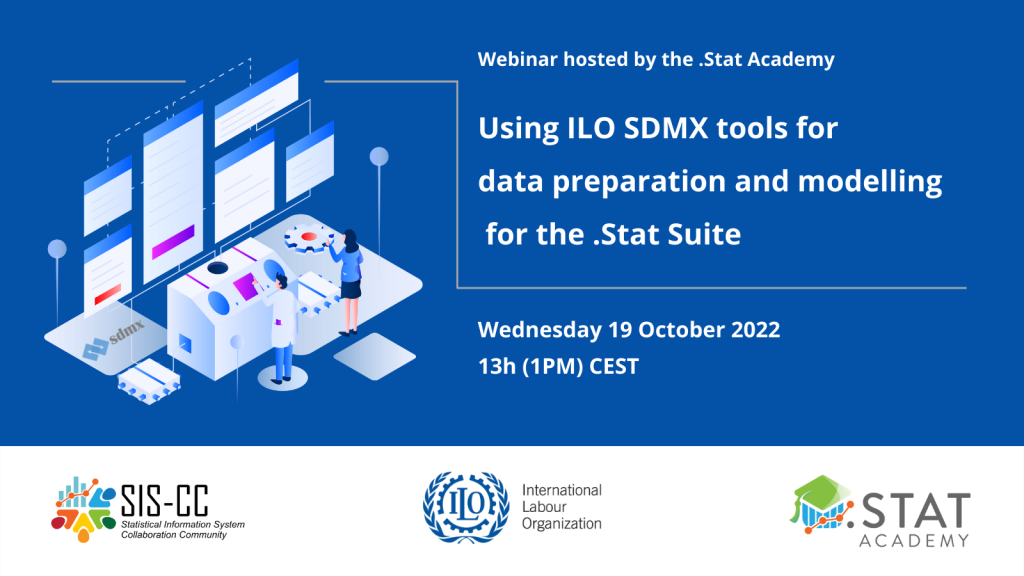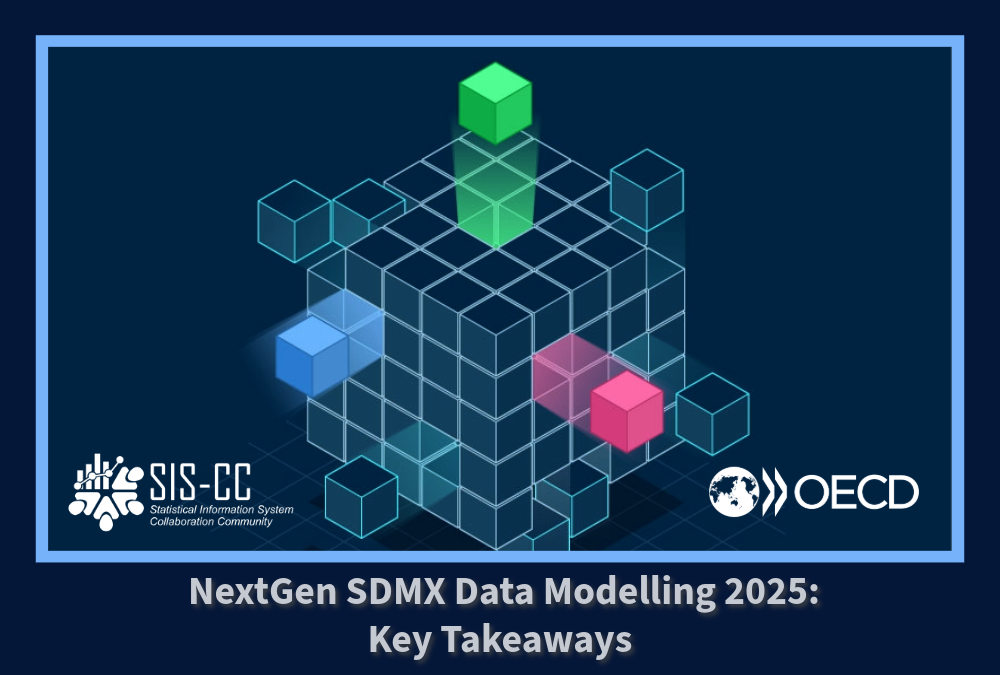
The .Stat Academy hosted a webinar on Wednesday, 19 October 2022, to demonstrate how the ILO SDMX tools (namely SDMX Constructor and SMART) can be used to build the structural metadata and load data on the .Stat Suite platform. The .Stat Academy is a platform for data producers and data toolers to learn and teach, in the context of the .Stat Suite implementation project. It is an initiative of the OECD-led Statistical Information System Collaboration Community.
Since 2017 the International Labour Organisation uses .Stat Suite as the core platform for the implementation of Labour Market Information System (LMIS) in its member states.
The story behind the tool: SDMX behind the scenes
Several years ago ILO looked into developing a light statistical processor able to generate statistical tables and processing microdata with the idea to create a formal definition of the statistical table by using a Data Structure Definition (DSD). This generated the need for a tool to define the DSD which led the ILO to the creation of the SDMX Constructor.
“It is our first successful effort of hiding SDMX behind the scenes to get a tool that is more conceptual than sdmx-based, but is also integrated in the SDMX Constructor”, says Edgardo Greising.
SDMX Constructor in a nutshell
SDMX Constructor is a simple standalone structure authoring tool with the ability to create and edit components of SDMX information models like Data Structure Definitions (DSDs), dataflows and all their related artefacts.
There are many advantages with the SDMX Constructor : free for users, free first-level support; it is easy to install and update, translation options via Google or DeepL. It allows for a direct connection to .Stat Data Lifecycle Manager (.Stat DLM) to read and write artefacts directly from the .Stat Suite.
Data modelling and structural metadata preparation in LMIS
In a typical LMIS implementation when a new .Stat Suite instance is initialised, the following steps are necessary for modelling and preparing the data tables for upload:
- Verify the system connection (by uploading the AgencyScheme)
- Prepare the list of common concepts and define their representation (ConceptScheme/Codelists)
- Define tables by establishing the indicators and their respective disaggregation variables/breakdowns, and descriptive metadata (DSD, Dataflow and ContentConstraint)
- Organise the tables by themes or any other criteria (CategoryScheme/Categorisations)
- Prepare data and upload (SDMX-CSV)
What is LMIS?
A Labour Market Information System (LMIS) is a network of institutions, persons and information that have mutually recognised roles, agreements and functions with respect to the production, storage, dissemination and use of labour market related information and results in order to maximise the potential for relevant and applicable policy and programme formulation and implementation.
The International Labour Organisation has implemented the .Stat Suite as the core platform for the implementation of Labour Market Information System (LMIS) in its member states.
Recently the Ministry of Labour and Social Security of El Salvador launched SIMEL, the first Labour Market Information System (LMIS) in the Central American region and second of its kind in the Latin American region. SIMEL, with .Stat Suite at its core, responds to the need to overcome the statistical gap in labour matters and to provide timely and internationally comparable statistics to better diagnose the labour situation in the country. Read more about how El Salvador implemented LMIS on our blog.
More information on LMIS can be found on the ILO website.
Experts
Edgardo Greising, Head of Knowledge Management Solutions Unit – Statistics, International Labour Organisation; Chair of the SDMX Technical Working Group (TWG)
Shutong Ding, Statistical Knowledge Management Officer, International Labour Organisation


